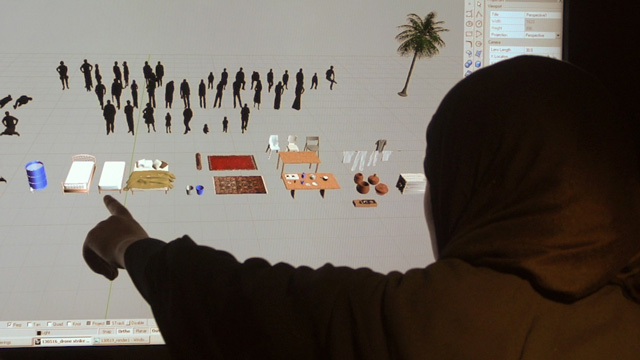deutsch | english |
SOCIAL GLITCH
Radical aesthetics and the consequences of extreme events
Curated by: Sylvia Eckermann, Gerald Nestler, Maximilian Thoman
An exhibition project at KUNSTRAUM NIEDEROESTERREICH 25 09 - 05 12 2015
and in the public space of Vienna with projects in collaboration with TONSPUR Kunstverein Wien and WUK.performing.arts
| WORKS | NEXT > Christina Goestl (AT) |
Forensic Architecture (GB)
|
|
 |
|
Drone Strikes. Case study no. 2, video still © Forensic Architecture 2014 |
Forensic Architecture (GB)
DRONE STRIKES. Case study no. 2: "The Architecture of Memory", Mir Ali, North Waziristan, October 4, 2010, 2013 Video, 9:36 min. In collaboration with SITU Research
Investigating covert operations through spatial media. One of the most under-researched aspects of drone warfare has been the spatial; that is, the territorial, urban, and architectural dimension of these campaigns. Forensic Architecture has investigated several issues relating to the spatial mapping of drone warfare; for example, the geographical patterns of strikes in relationship to the kind of settlements (towns or villages) targeted and types of buildings targeted. Our aim was to explore what potential connections there might be between these spatial patterns and the numbers of casualties, especially civilian casualties. On October 4, 2010, a US drone struck a home in the town of Mir Ali, North Waziristan, in Pakistan, killing five people. One of the surviving witnesses to this attack is a German woman, who lived in the house at the time with her two-year-old boy and her husband. Together with Forensic Architecture, this witness built a digital model of her home, which no longer exists. During a day-long process of computer modeling, the witness slowly reconstructed every architectural element of her house. Placed virtually within the space and time of the attack, the witness was able to recollect and recount the events around the strike. |